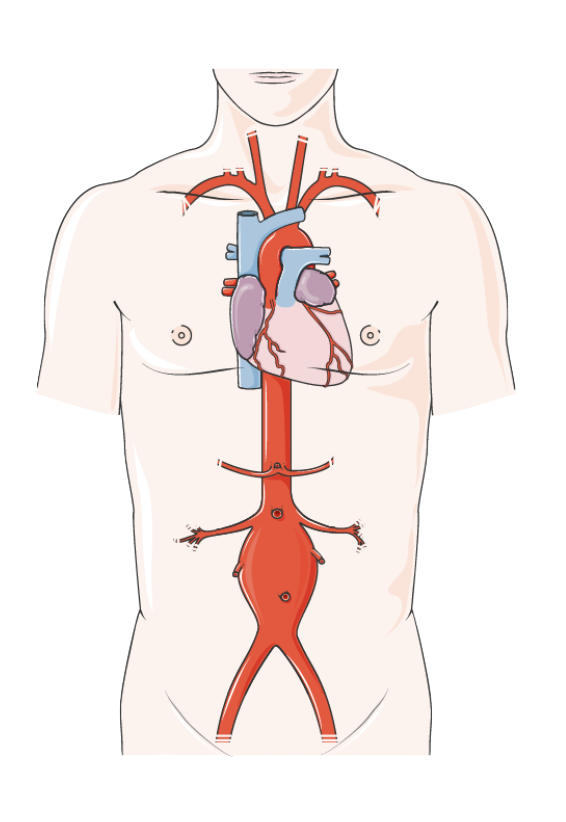What is an Abdominal Aortic Aneurysm?
Abdominal aortic aneurysms occur when the abdominal aorta, an essential blood vessel that supplies blood to the pelvis and legs, weakens and a balloon-like dilation develops. If the dilation continues to grow, it is at risk of rupturing, which is often fatal.
RISK FACTORS
Family history of aneurysms
Increased age
Smoking history
High cholesterol
High blood pressure
Connective tissue disorders
SYMPTOMS
Most commonly, aneurysms are asymptomatic and are often found incidentally on imaging for other reasons.
When the aneurysm is at immediate risk of rupturing, or is currently rupturing, patients usually experience severe abdominal or back pain. It is critical that these patients seek immediate medical attention by presenting to the nearest emergency department.
TREATMENT OPTIONS
Blood pressure and cholesterol control
Smoking cessation
Regular exercise
Surgery: either via a minimally-invasive approach with stents (EVAR) or open surgery to repair the aneurysm

This graphic depicts an AAA (Abdominal Aortic Aneurysm).
This type of AAA is called a fusiform aneurysm due to the swelling being of equal proportions on both sides. This is the most common type of AAA. Generally, aneurysms can simply be monitored, and as long as they remain below a size threshold or do not rupture, there is no immediate need for surgery.
DISCLAIMER
The information provided is for informational purposes only and is not to replace professional medical advice, diagnosis, treatment or care. Always seek the advice of a physician or other qualified health provider concerning any questions you may have regarding the above information and any medical condition you believe may be relevant to you or to someone else. The above information is not exhaustive and does not cover all diseases, physical conditions or their treatments.
